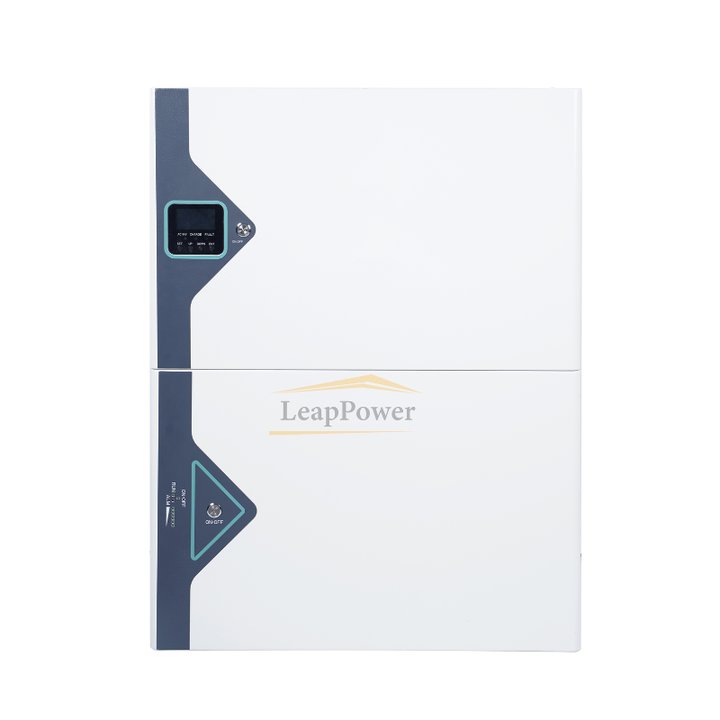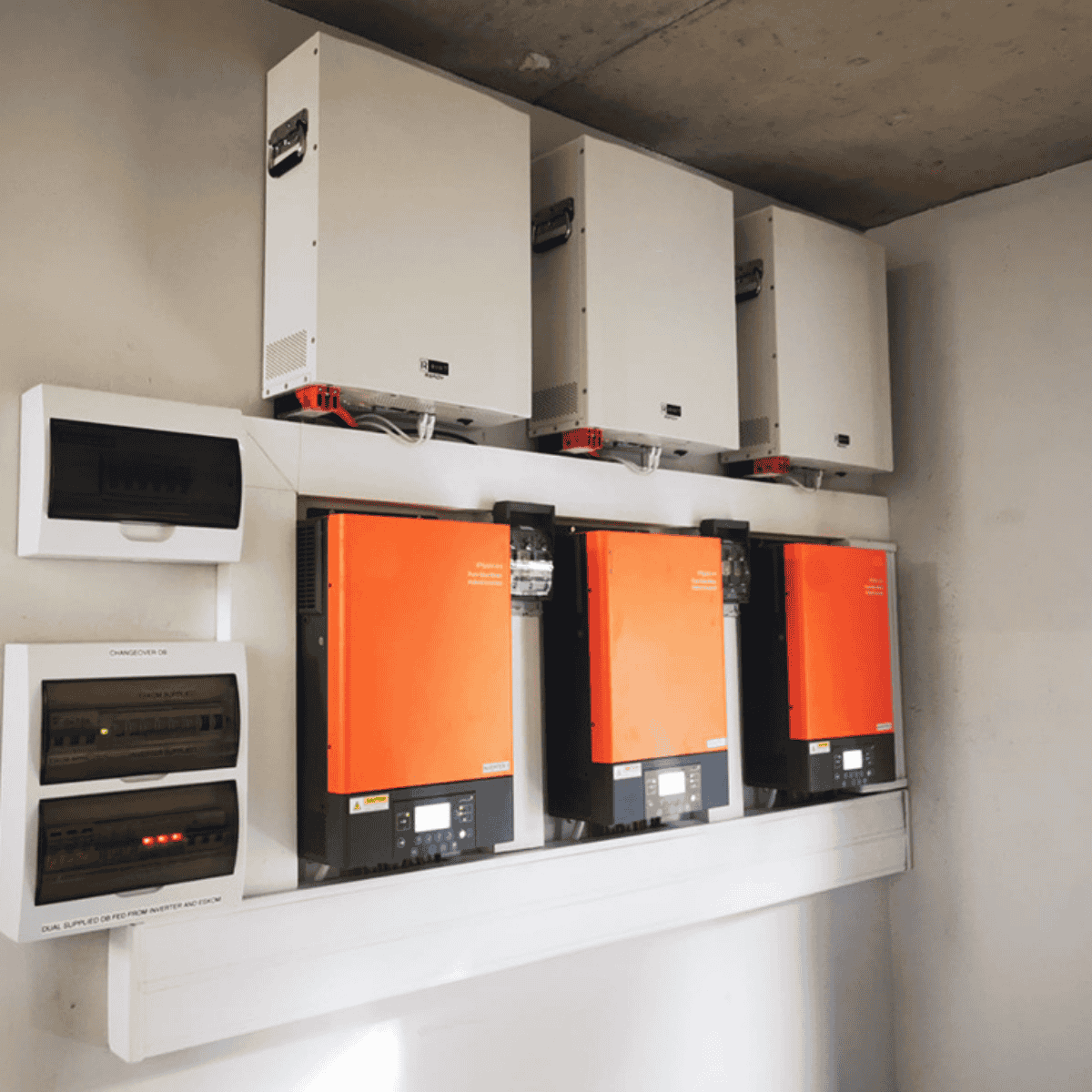The home energy storage industry is expected to see huge growth over the next couple years. Installations has more than doubled from 2021 to 2023, and global capacity could reach upto 100 GWh by 2025.
Overview:
1.What is the primary market trend for residential energy storage systems in 2024?
2. What can be expected in terms of advancements for residential batteries in 2024?
3. What are the projected developments for energy storage inverters in 2024?
1. What is the primary market trend for residential energy storage systems in 2024?
The prevailing trend is the adoption of All-In-One home energy storage systems, high energy battery systems, and high voltage battery systems.
Why is the All-In-One home energy storage system considered the future direction for residential solar storage systems?
Currently, the split-type system (battery + inverters) is more popular in the home energy storage market. However, the All-In-One system is poised to become the dominant choice due to its enhanced efficiency, especially for homes with high electricity demands like those with electric cars. This comprehensive system includes all the necessary components in one package, eliminating the need to purchase separate parts.
The All-In-One system represents an exciting advancement for manufacturers seeking to streamline their production process. Its plug-and-play nature ensures easy installation without the need for on-site docking or debugging, resulting in a more enjoyable user experience.
The integration of the All-In-One system revolutionizes the market. Its highly integrated design eliminates the requirement for additional photovoltaic inverters, reducing hardware costs and simplifying installation and maintenance. This not only saves on initial equipment investment but also reduces subsequent software costs. In fact, our calculations indicate that the All-In-One energy storage system can save approximately USD 155 per kilowatt-hour compared to the split scheme – quite impressive, isn't it?
One of the key advantages of the All-In-One system is its streamlined production process, as a single supplier provides both the batteries and inverters. This reduces time and labor costs associated with testing, installation, and maintenance. Furthermore, consumers find this type of system more user-friendly since it eliminates the need for additional components or hardware.
With the All-In-One home energy storage system, both the battery and inverter undergo the same certification process, enabling quicker and easier product certification.
Our team has been diligently researching the All-In-One home energy storage system for quite some time, ensuring that it meets all the desired features. If you're interested, feel free to explore the detailed technical aspects of this system!

Why is the high energy battery more popular in home solar storage systems?
The high energy battery has gained popularity in home solar storage systems due to its ability to store solar power for longer durations. With a higher energy capacity, it allows for the storage of a larger amount of excess solar power, ensuring sustained energy supply during outages. This not only helps in reducing electricity costs but also enables longer periods between recharges, making it ideal for areas with limited sunlight.
As the global middle-class customer base continues to grow in Europe and America, the system energy capacity is expected to gradually increase. Currently at 15kWh, it is projected to reach 20+ kWh by 2023.
Why is the high-voltage battery system gradually replacing the low-voltage battery system?
In the European household storage market, particularly in Nordic and German-speaking regions, there is a shift from low-voltage to high-voltage battery systems. This product iteration is driven by the higher efficiency offered by high-voltage energy storage systems, which are approximately 4% more efficient compared to low-voltage systems.
2. What are the anticipated developments for home solar batteries in 2024?
During the charging and discharging process of batteries, heat is generated as a result of chemical reactions. Excessive heat production can potentially damage the battery and shorten its lifespan. To mitigate this issue, one approach is to utilize high voltage, which reduces the current flowing through the battery and consequently lessens heat generation. High voltage also enhances discharge efficiency and safety. Charging batteries at higher voltages accelerates the reaction, enabling faster charging. Furthermore, higher voltage leads to lower discharge currents, reducing the risk of fire or explosion. Consequently, employing high voltage is an effective means to enhance battery performance and safety.
The emergence of the voltage platform has resulted in a reduction in the capacity of individual cells. Most low-voltage energy storage cells are currently around 100Ah, while the high-voltage platform is gradually transitioning to 50Ah. Prismatic cells have capacities ranging from 50Ah to 300Ah, while pouch cells typically range from 30Ah to 80Ah.
Expectations for home solar batteries include longer cycle life and higher charge and discharge rates. Household energy storage cells are projected to have a cycle life of over 6000 times, and the charge and discharge rate is expected to be 1C.
The most prevalent types of batteries available on the market are NMC (nickel manganese cobalt) batteries and LiFePO4 (lithium iron phosphate) batteries. LiFePO4 batteries are widely used in energy storage applications. They offer high cycle life, ranging from 6000 to 12000 cycles, and provide enhanced safety with a thermal runaway temperature of 270°C, higher than the 150°C of NMC batteries. Moreover, LiFePO4 batteries are slightly more cost-effective compared to NMC batteries. Consequently, lithium iron phosphate batteries possess significant advantages as energy storage batteries and represent the mainstream trend in the field.
Battery modularization and expandability are additional developments to anticipate. By combining multiple standard battery modules, the system's energy capacity can be expanded. This approach simplifies installation, operation, and maintenance, while also facilitating future expansions to meet increased power demands. Users have the option to directly purchase battery modules and install them in parallel according to the provided user manual.
3. What are the expected advancements for energy storage inverters in 2024?
One notable development is the introduction of hybrid inverters, which integrate parallel and off-grid functionalities. This allows for the configuration of a PV+ Energy storage system with a single hybrid inverter. Eliminating the need for separate PV and energy storage inverters on the AC and DC sides enhances the installation efficiency of the overall storage system. Despite being approximately 20% more expensive than standalone energy storage inverters, the hybrid inverter has gained high customer acceptance.
Another advancement is the increase in power capacity of household energy storage inverters. To meet the growing power demands of users, these inverters will see a boost from the current ranges of 3kW and 5kW to 8kW, and eventually expand to three-phase 10kW or higher. Market-leading companies such as Solis, Growatt, INVT, and Sungrow have already developed energy storage inverters ranging from 10kW to 40kW.
Furthermore, high-voltage inverters are gaining prominence due to their simplified circuit topology , compact size, lightweight design, and reduced failure rates. These high-voltage hybrid inverters offer several advantages in terms of efficiency and reliability.
, compact size, lightweight design, and reduced failure rates. These high-voltage hybrid inverters offer several advantages in terms of efficiency and reliability.
The home solar storage industry is projected to experience exponential growth in the coming years, driven by factors such as increasing energy costs and geopolitical tensions. As the market expands, it's crucial to be aware of these key trends that will shape the home solar storage landscape in 2023 and beyond. Staying up-to-date with these advancements is essential for those considering entering this rapidly growing industry.




[…] As technology advances, the efficiency and affordability of solar power systems continue to improve. Innovations such as more efficient solar cells, better battery storage, and the integration of artificial intelligence in energy management are shaping the future of solar energy. Additionally, the global push for decarbonization and renewable energy adoption makes solar power a central pillar… […]
[…] The Future of LiFePO4 Batteries […]
[…] Home energy storage system is gradually become the mainstream in recent years. (If you want to know more details, please check previous post) […]